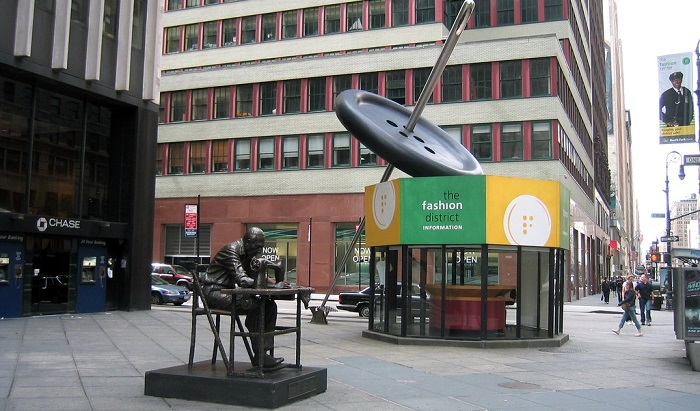"Gone are the days when almost 95 per cent sold in America was a product of the New York City’s Garment District spread over 7.7 million sq. ft. of manufacturing space, generating over 100,000 jobs. Today, the space has shrunk to mere 1.1 million sq. ft employing just above 7,000 people. However, realising the need to salvage ‘Made in New York’ apparel manufacturing, several designers and labels are initiating measures."

Initiatives to boost ‘Made in USA’

Gradually, apparel manufacturing activity which had moved out of the US is returning back to the nation for good. Even consumers are now demanding fashion Made in USA. Other than ‘Made in USA’, ‘Made in New York’ according to the experts carries its own sentimentality. Five factory owners, for example, came together in 2007 to launch ‘Save the Garment Centre’, a nonprofit organisation to promote manufacturing in New York. And Stefan Siegel, a former model turned investment banker based in London founded ‘Not Just A Label’ (NJAL) in 2008 - a global platform to promote domestic products and works of emerging designers. NJAL has also opened pop-up stores in Berlin, Dubai, Venice and finally in New York.
Stakeholders are putting in serious efforts to revive New York’s manufacturing hub. The Garment District houses many design offices including Public School to Engineered Garments and Aimé Leon Doré, whose production still happens in NYC. For designers ‘Made in New York’ means something close to their hearts than the ‘Made in USA’ label.
For instance, designers like Greg Rosborough, who focus on ‘Bespoken’, a label that won GQ’s ‘Best New Menswear Designer in America’ award in 2014, and Abasi Rosborough, his own line of futuristic clothes designed with his partner Abdul Abasi, call ‘Made in New York’ label something akin to being made in Paris instead of France.
High production costs, not a deterrent
While the cost of making garments in New York is not less since it involves high production costs and rentals, among other things. However, despite being the most expensive place to make clothes, designers like Dominic Sondag, manufacturing in New York is of advantage since he can oversee everything and if a sample is not according to his expectations, he can quickly work upon it. So while the cost of the end-product tends to be a little higher, making in New York also helps these designers support the local economy.
Also since designers are involved at every level of production process, it also means they can be responsible for everyone, who is a part of the supply line resulting in fair wage practices and unity among workers. Also the garment district’s artisans possess the required skill-sets to create an ensemble so the designers don’t really have to depend upon a factory and its workers at some faraway place, whose skill-sets are not known. Workers in the garment district are experienced pattern-makers and tailors, whose skills are polished since they are engaged in the business for last several decades.












